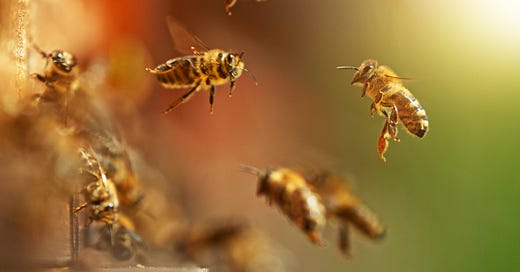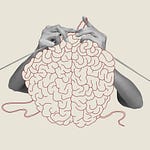Here is the sixth chapter of Taking Heart and Making Sense.
If you’re new here, you might like to read an intro article about the book. I also recommend listening to the book’s Introduction first. For new listeners, this chapter can mostly stand alone, but goes well with Chapter Four and Chapter Five.
This chapter introduces concepts that help us to understand complex systems, and eventually the idea of the human self as a complex system. My foray into theoretical biology follows from the directive of speculative naturalism: that we should begin our theories with observations of nature, because we are interested in consciousness (or for me, feeling) as a natural phenomenon.
I imagine most readers will have heard the term complex system used in various contexts. No longer limited to the academic fields that define it, a generalised notion of complexity seems to have found its way into everyday language, at least to a degree. But what does complexity really mean, and how does it relate to change? The question itself seems complex! This chapter provides an overview of a set of ideas that are useful for understanding complex systems. These concepts can, in turn, help us to understand life itself as a certain kind of process, for a particular period of time.
The concepts I cover here include emergence and hierarchical organisation (or, to put it more simply, understanding a system in terms of levels or organisation), while paying attention to the limits to observation. For those for whom these ideas are unfamiliar, I try to relate my explanations to human bodies and human selves. This way of seeing a human self as a complex system helps to point out that the brain simply cannot be the centre of agency; it must be seen in the context of not only a whole body but a whole self with a history over time.
Once we see the self this way, as a living system and a whole process over time, we find that there are a multitude of ways to define this process. All living systems go through some sort of a life cycle, moving through particular stages and types. I follow theoretical biologist Stanley Salthe’s theorising of dissipative systems: systems that build up and then dissipate order in characteristic ways over a life span. The important point to grasp here is that dissipative systems move through partially predictable stages but are always also unique individuals, because they develop inwardly as they gather a unique history over time.
The main idea to gather from this chapter, (and the shorthand way I remind myself of all these rather complex ideas), is the idea that the self collects most of the effects of its own functioning. It is not fully closed (or, fully separate from its environment) but rather, semi-autonomous. The idea of the self as a semi-autonomous system balances the fact that most of the activity within a system refers inwards, but yet the system is still situated and causally influenced by its surroundings.
All of this seems to me to provide a good grounding to acknowledge that we are dynamically engaged beings, as enactivism emphasises, but that we are, at the same time, highly internalised beings. Within nature, the individual is an important boundary, whether that be for a human or any other organism. And this, in turn, helps us to stretch a little further into the mystery of the human being, and of all life, that life involves an opening inward, and thereby, the possibility of experience.
Quick overview:
In this chapter I provide an introduction to the concepts of emergence, complexity and hierarchical organisation. This then leads into a discussion of living systems as dissipative structures, systems that build up and dissipate different kinds of order at different stages of life.
I relate this general theoretical framework to the human self as a way of emphasising that the self as a semi-autonomous system involves an opening inwards. It not only moves through partially predictable stages but gathers a life history that is real and unique; the system develops a relation to itself over time. This helps us to see that agency and experience cannot be identified with the brain alone, but are the inner aspect of the whole self, including the whole body.
The overview of concepts in this chapter is primarily based on theoretical biologists Timothy Allen and Valerie Ahl’s book, Hierarchy Theory: A Vision, Vocabulary and Epistemology, and Stanley Salthe’s Development and Evolution: Complexity and Change in Biology.














Share this post